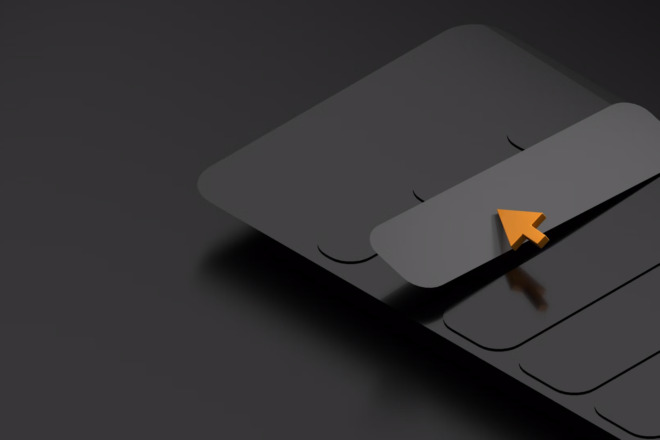You’ve probably read a lot about the importance of user experience, or UX, design and how it needs to be at the core of any process. What is UX design? It’s a customer-centric approach to designing websites, apps and other items, which takes into account the emotions evoked in the user as well as functionality and how easy it is for the average target customer to use. About 75 percent of people judge your website’s credibility on its design, which encompasses everything from the site’s load time to navigation hierarchy to the aesthetics of the page. User experience design makes a difference in how much your site visitors trust your business. There are some specific areas in which user experience design clearly makes a difference in the consumer journey. Here are seven reasons user experience design is essential to everything.
1. It Develops Trust
A well-designed site with a customer-centric approach shows the customer you care about whether the site is easy for them to use and creates a layer of trust you otherwise wouldn’t have. Think about the last time you visited a website that wasn’t intuitive. You likely bounced away pretty quickly and thought about how the business was clueless about your needs. Show your site visitors you care about their experience by designing for your target audience. Create a buyer persona of your typical target audience member. Then, filter all aspects of your site through the eyes of the persona, including the colors you use, where you place buttons and even the language used. For example, you might choose more informal wording for a younger audience.
2. It Reduces Bounce Rate
In one survey, users indicated the overall aesthetics of design was important to them. Around 54 percent are more likely to feel positive about a design that appeals to their design sensibilities as far as layout and photography go. They ranked aesthetics above personalization. If you want to reduce your bounce rate, your design needs to be visually pleasing to the user. Keep in mind that a design which is visually pleasing to a professional designer may not be as attractive to the user. User experience design principles say that you should conduct some split testing to see how different colors and layout work with your target audience, rather than simply trusting your own preferences. You want a design which is visually appealing to your audience but also works for them from a usability standpoint. The best way of ensuring you hit both standards is through A/B testing.
3. It Helps Capture Mobile Visitors
A highly usable website must factor in how many mobile visitors access the site and how usable the design is on smartphones. Every day, more and more people use their smartphones to access the Internet. In an analysis of 11 million mobile landing pages in 213 countries, researchers found even a mere two seconds of additional load time resulted in higher bounce rates.
For example, a shift from a loading time of one second to three seconds increased the bounce rate 23 percent and an increase to five seconds upped the bounces by 90 percent. However, reducing your mobile bounce rate is about more than just speed. Your page must also be optimized for mobile use. Think about user experience design for mobile — how do images adjust to the smaller screen size? Look at everything from the size of the text, how the menus function and if forms and call-to-action (CTA) buttons work correctly on mobile.
4. It Helps You Overcome Competition
Investing in user experience design for your website ensures you’re making the buyer’s journey as simple as possible for your customers and removing aggravations. Not every business focuses on the UX of their websites – doing so puts you a step ahead of the competition. Put yourself in the shoes of your typical buyer. If you had a choice between a site which was easy to use and personalized for you versus one that was very generic and not always easy to use, which company would you do business with?
5. It Encourages Customer Loyalty
Customer loyalty is one of those tricky things that’s hard to attain and easy to lose. Encouraging customer loyalty encompasses everything from the service customers receive, which is part of the user experience, to how easy it is to reorder to whether they feel appreciated. Take a step back from your site and think about what elements encourage customer loyalty and which ones push customers away. For example, if you run an e-commerce site, how easy is it for customers to reorder? Can they order a past purchase with a click of the button? Do you send reminders when they are likely to be out of a product? How can you save your customers time and effort?
6. It Helps You Focus on Your Mission
A customer-centric brand forces the business’s leaders to focus on the needs of the customer. More than likely, your company’s mission ties into your customers in some way. For example, you might create solutions to make their lives easier. Take the customer-centered design approach. You’re then forced to think about the needs of the consumer and become empathetic to their struggles. A user experience design approach naturally focuses your attention on your overall mission as a brand.
7. It Helps You Exceed Expectations
Users encounter advertising in nearly every aspect of their daily lives. They’re used to companies trying to sell them something, and they ignore much of the marketing content they see. On top of that, they’ve seen a lot of different websites, so it takes a lot to impress them. Where you can make your mark is through your design. Make sure your landing pages have a singular focus. Also check that your ads speak to the needs of the user, rather than your brand’s needs. Using buyer personas allows you to not only meet the expectations of your typical customer but also to offer a bit more than they expected.
UX Design Is for Everyone
As you can see, using UX design is a smart strategy for any business. If you place your focus on creating an amazing experience for the customer, your brand’s reputation will benefit.
CHAPTER 5: What Is the UX Process? CHAPTER 7: What Is Lean UX?
The UX Design Guide for All Levels: Introduction
Chapter 1: The Top Front End Technologies for UX Designers
Chapter 2: What is the Difference Between UX and UI?
Chapter 3: The Laws of UX
Chapter 4: Why Mobile UX Matters
Chapter 5: What Is the UX Process?
Chapter 6: Why User Experience Design Is Essential to Everything
Chapter 7: What Is Lean UX?
Chapter 8: The Top UX Design Principles
Chapter 9: The Best UX Tools and Techniques
Chapter 10: How to Become a UX Designer
Chapter 11: Top Mobile UX Design Principles to Remember
Chapter 12: Dark Patterns: The Trickery Behind These Poor UI Tactics
Chapter 13: What Does Good Customer Experience Look Like?
Chapter 14: The Different Types of User Interface
Chapter 15: The Top UX Design Courses
Chapter 16: Skills Needed to Become a Great UI Developer
About The Author
Eleanor Hecks is the Editor-in-Chief of Designerly Magazine, an online publication dedicated to providing in-depth content from the design and marketing industries. When she's not designing or writing code, you can find her exploring the outdoors with her husband and dog in their RV, burning calories at a local Zumba class, or curled up with a good book with her cats Gem and Cali.
You can find more of Eleanor's work at www.eleanorhecks.com.


